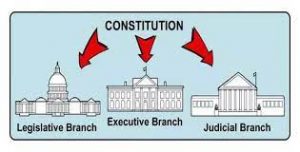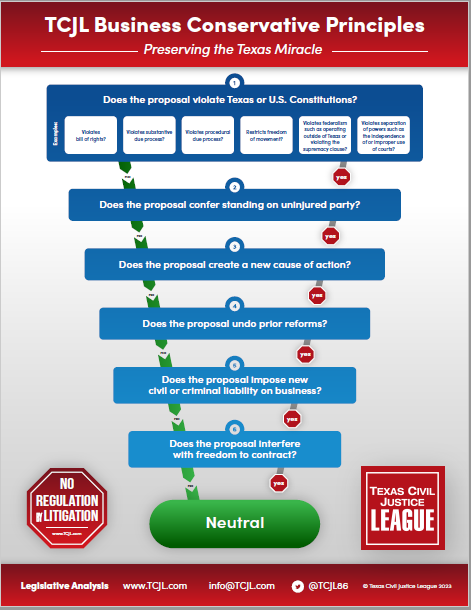 Legislation making substantial changes to Chapters 311 and 312, Government Code, which have long reflected common law principles of statutory construction, was filed last week in the Texas House.
Legislation making substantial changes to Chapters 311 and 312, Government Code, which have long reflected common law principles of statutory construction, was filed last week in the Texas House.
The thrust of the proposal, HB 2139, purports to bar a court from inquiring into legislative intent and requires it to “enforce the statutory text as written and in accordance with the meaning the words of the statute would have to an ordinary speaker of the English language.” This provision seems to restate the general rule that courts construe the intent of statutory language according to the plain meaning of the statute. But the amendment to § 311.021, Government Code, goes on to eliminate five “presumptions” that courts can make about statutes, to wit: (1) statutes are intended to comply with the federal and Texas constitutions; (2) the entire statute is intended to be effective; (3) a just and reasonable result is intended; (4) a result feasible of execution is intended; and (5) public interest is favored over private interest. Again, we’re not sure what difference eliminating these presumptions would really have, since courts always stop after determining the plain meaning of the text anyway.
But in the event a court finds that the text is ambiguous, extrinsic aides, such as legislative intent, have on occasion been consulted to sort out the confusion. The bill would put a stop to that, however, as it amends § 311.023 to prohibit a court from considering statements from individual legislators, including authors, committee reports, statements made in legislative hearings or in floor debate, and the governor’s signing statements. It further prohibits a court from looking at the consequences of a particular construction, the administrative construction of a statute (that is, barring deference to agency interpretation), and the statute’s title, preamble, or emergency provisions. Again, it is difficult to assess the effect of these changes because courts rarely have to resort to them and, in our experience, have always been skeptical of “intent” arguments in the first place.
The possible exception, however, is the elimination of consideration of the administrative construction of a statute. This could be problematic for regulated entities that rely on the predictability and consistency of agency interpretation of regulatory statutes. Even so, rarely do courts rely solely on an agency interpretation as an aid to construing a statute in any event (since agencies in vast majority of cases either implement the statute), and if they disagree with an agency interpretation, they will certainly say so.
The bill’s proposed changes to § 311.032 are perhaps more intriguing. These changes seem to extend the concept of severability so that, “[u]nless a statute includes a nonsevarability clause, every provision, section, subsection, sentence, clause, phrase, and word of a statutory provision, section, subsection, sentence, clause, phrase, or word to any person, group of persons, or circumstances, shall be severable from each other.” Moreover, “[i]f any application of any statutory provision, section, subsection, sentence, clause, phrase, or word to any person, group of persons, or circumstances is found by any court to be invalid, preempted, or unconstitutional, for any reason whatsoever, then all remaining applications of that statutory provision . . . to all other persons and circumstances shall be severed and preserved, and shall remain in effect.” Ironically, the amendment goes on to say that “it is the legislature’s intent and priority that every valid, non-preempted, or unconstitutional application of its statutory enactments be allowed to stand alone and remain enforceable.” Of course, given that the court has already been told that it cannot consult legislative intent, we can’t be sure what this provision means.
Is this formulation of “severability” workable? If severability operates down to the word level of a statute, how does that promote a uniform interpretation of a statute according to its plain meaning? Sometimes words have more than one plain meaning, so courts have to determine which meaning operates in the context of the language surrounding it. But if a court is barred from interpreting a statute in a contextual way, i.e., by looking to the subject matter of the statute to inform the plain meaning of the text, then how does any statute mean anything? All that’s left is a word salad that applies to each litigant in the litigant’s own peculiar circumstances. If this is the case, there really isn’t any “law” at all, just an infinite series of one-off decisions upon which reliance is impossible.
The amendments go on to prohibit a court from declining to enforce the severability requirements “on the ground that severance would ‘rewrite’ the statute or involve the court in legislative or lawmaking activity.” It also states that “a judicial injunction or declaration of unconstitutionality: (1) is nothing more than an edict prohibiting enforcement of the disputed statute against the named parties to that lawsuit, which may subsequently be vacated by a later court if that court has a different understanding of the law; (2) is not a formal amendment of the language in a statute; and (3) no more rewrites a statute than a decision by the executive not to enforce a duly enacted statute in a limited and defined set of circumstances.”
These changes appear to say that a judicial decision declaring a statute unconstitutional has no effect beyond the parties in the case. In other words, as we understand it, this language states that, for example, SCOTX’s decisions declaring the Texas school finance system unconstitutional apply only to the school districts that were parties to the case, not to the system as a whole. If that reading is correct, then the proposed amendments mean that every school district would have to bring the same lawsuit challenging the constitutionality of the system as applied to that district in order for the court’s decision to have statewide effect. The same thing would go for any constitutional challenge, creating, if not the likelihood of, the potential for endless litigation over the same constitutional issue. And because the amendments consider a judicial decision as permanently provisional, the same statute can be constitutional as to some parties today and unconstitutional as to others tomorrow. This is not a recipe for stability and predictability.
In a larger sense, it appears to us that the amendments bump right up against the independence of the judiciary to resolve constitutional issues as a fully coequal branch of government. [See Marbury v. Madison, 5 U.S. 137 (1803).] It should be emphasized that the proposal does not deal with a Dobbs-like situation in which a court extended a constitutional protection only to take it back later. It deals rather with the construction of statutes and limits on the scope of judicial review of the legislature’s actions at any given point in time. This means that every statute is contingent and has no fixed meaning.
For example, suppose the legislature enacts a statute regulating the use of cryptocurrency to pay for certain goods and services. (This is a real bill. SB 914 prohibits a person from using cryptocurrency to buy ammunition.) A person who only uses cryptocurrency to pay for stuff sues on the basis that the statute deprives the person of equal protection under the Fourteenth Amendment, since it allows people to use other forms of payment for the same good or service. A court agrees and enjoins enforcement of the statute on constitutional grounds. Under the terms of the bill, that ruling only applies to the plaintiff. What if the next plaintiff brings the same challenge in another court, which decides the issue the other way? Presumably, those cases would find their way to a court of last resort, but even that court’s “final” decision would only be enforceable as to those parties. Surely that is not the way law is going to be, but HB 2139 poses that question.
Of course, whether or in what manner the bill’s provisions are actually enforceable against the courts will have to be determined by . . . the courts. But, it appears, the statute limits any decision regarding its construction to the party who challenged it, creating the same closed loop as any other statutory challenge.












